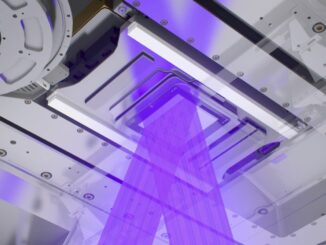
From its mainframes to the modern Power architectures, few companies have pushed investments into chip designs with the gusto IBM has over the years. The software tooling for logic and other simulations has continued to evolve, both internally via proprietary measures inside Big Blue, but they have also relied on the evolution of other ISV offerings to design new chips.
The company announced that the same software stack that they have used internally for a number of years will be extended to a new crop of chip designers using a cloud-based approach that bundles all the hardware infrastructure on the SoftLayer side along with the various collections of middleware and software they have cobbled together over the years. The goal for IBM is to be able to provide some of their software as a service to ease licensing, infrastructure management, and even support (since the operating system and other configuration details remain consistent in a cloud environment of their creation), which IBM tells us will open the door to more EDA startups.
Granted, when you read the title, somewhere in the back of your mind there was a slow count on one hand of all the startup chipmakers that are easy reference reach, but this is because of a few prohibitions for fresh companies in the space that boil mostly down to cost. However, with the influx of potential new companies rolling out of the demand for sensor-based and mobile devices, not to mention those who are working on new architectures using ARM and other components or accelerators, there could be a fresh explosion in the startup chip market. While IBM is not yet able to share the exact pricing on the IBM SoftLayer based EDA cloud offering, Big Blue says it will significantly lower the barriers to onboarding in the chip design space, particularly on the middleware and software licensing fronts.
“One thing that is big here if you look at costs for EDA startups is the ability to do hardware and software simulations. With a new generation of SoCs, then also with FPGAs, GPUs, and so forth, it is going to be increasingly important for people to simulation both the hardware and software together before they tape out their designs and build hardware that does what they want it to do,” Carl Anderson, IBM Fellow and long-time Big Blue vet from the microprocessor design camp told The Next Platform.
For chip startups, the barriers aren’t just a matter of pure cost, and as Anderson tell us, the hardware costs are negligible compared to the software pricing. It is also a matter of being able to scale for the more demanding segments of the EDA workflow. There are some benefits to having access to the scalability of a cloud environment, especially when it comes to some of the more expensive (computationally and licensing) elements like co-simulation of the designs to ensure the systems will work in as near of a production environment as software can fake. The logic verification end of this is where IBM is looking with its EDA cloud—and with the tuned environment and some cool tricks learned over the years in the EDA house inside IBM, the teams have been able to get a 10X boost performance-wise over other approaches to logic verification. As Anderson explained, “At IBM, we spend over 90 percent of our EDA compute cycles doing the hardware/software verification. Over the last decade we’ve finally been able to boot a true operating system (instead of a miniature version) on all of our mainframe and Power processors because of the amount of co-simulation we’re able to do.”
In terms of workload management and scheduling, the SoftLayer cloud is hooked together with IBM Platform LSF. As we know from a previous conversation with former Platform Computing execs (who spun off their own competitive offering to Platform LSF) a majority of large-scale users in EDA users in the space have used LSF exclusively for a number of years, a fact that might make this offering more in line with what could otherwise be missing if they tried to spin up an EDA environment on another public cloud (not to mention the challenges of getting logic simulations to run there—or talking the locked-down EDA vendor community into extending their licensing models to meet the big cloud).
What is noteworthy here is that the use model for many HPC applications in the cloud, which is bursting during times of peak need (instead of overprovisioning to meet those demands), using the IBM SoftLayer cloud might be quite difficult because all the tooling will have to be ported and consistent to seamlessly burst. Anderson says his teams recognize that is an issue and also, that this is not a fully automated path for EDA companies into the cloud. There will be some work to do to make sure codes can run on the new infrastructure and with the new tools, which means the use model is really one of full-time production clouds exclusively in IBM’s cloud. While we don’t generally talk much about cloud security here at The Next Platform, this is something that might make some startups a bit jumpy, especially in a security and IP protection-centric field like EDA. Anderson says the security of the cloud is robust and is the same that users of any of SoftLayer’s customers would expect.
“For bursting in particular, it’s going to take some real work for the logic simulation part of this. But for the library simulation, it should be reasonably straightforward. We have a partner, SciCAD, which is helping on the support side with this to get users quickly moving with their libraries by helping them move from their current library characterizations to the IBM one. The logic simulation though will be tricky but can be done.”
As noted previously, Anderson said they would not be disclosing pricing until general availability, which should be this summer, but he says the prices will be hourly and include a bundled cost for all the infrastructure on the SoftLayer side (the hardware, VPNs, compute, storage, etc) as well as tooling licenses. He says that they will not be embarking on a trademark path but the tools will be industry standard—or at least provide hooks into other industry standard tools when they announce the full availability.
It’s worth noting that we’ve been tracking the trend of domain-specific HPC clouds for applications that used to require supercomputer resources and some very hefty licensing costs. For instance, ANSYS recently took some steps toward making its HPC software licenses more accessible for startup manufacturing companies in particular by extending its licensing to a cloud—albeit one they control every aspect of. With EDA coming into the fold and a number of other HPC software areas in oil and gas looking to do the same, the pressure is increasingly on the ISVs in high-value domains to look to ways to flex their business and license models to accelerate adoption of their gear inside more startups. After all, they could grow into tomorrow giants and without alternatives at the beginning stages, could just as easily look to scale open source and internally-developed tools that exist simply as a way around startup-crushing licensing fees.





Be the first to comment